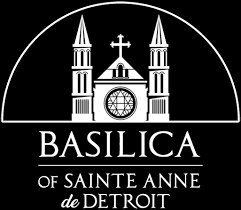FILM OVERVIEW
Two miles from downtown Detroit is one of Michigan's most ethnically rich and vibrant Hispanic neighborhoods. A vibrant colorful community also known as “Mexicantown”. The area known as Southwest Detroit has been home to many of our Hispanic brothers and sisters since the 1920s.
In 1910, the State of Michigan had fewer than 100 Mexicans. They started to migrate to Detroit from the states of Jalisco, Chihuahua, Guanajuato, Zacatecas, Durango, and Michoacán, and Mexican Americans migrated from southern states. Michigan was first entering the industrial revolution and there was a high demand for labor. Sugar companies were on the rise and began recruiting their employees from Mexico and Southern Texas to tend the state's sugar beets. Those who did not work in the sugar beet fields found work maintaining railways and assembly lines in the automobile plants. In 1920, a severe recession left the beet workers stranded in their camps with no work wages. Mexicans moved to Detroit to get industrial jobs, including Henry Ford's $5 per day jobs. The community of Mexicantown, originally known as "La Bagley", was established to provide Mexican-oriented goods and services.
In the 1930s, during the Great Depression, Michigan officials felt that they needed to come up with a solution for the lack of jobs reserved for “Americans”, and the solution was to execute a kind of “ethnic cleansing”, with the focus on the Mexican population. Instead of providing family assistance to Latino families, the Detroit welfare department, the federal government, and the Mexican Consulate collaborated to financially support the deportation of unemployed workers. This was also known as the Mexican Repatriation, where millions of American citizens were unjustly deported to Mexico between 1931 and 1933. As a result, the Detroit Mexican population decreased significantly from 15,000 to a mere 1,200.
Around the 1950s/1960s, the second and third generations of Mexicans had been born in Michigan and their presence caused the size of the Metro Detroit Mexican community to increase to over 106,000.
The Basilica of Ste. Anne de Detroit and the Most Holy Redeemer Church have been the spiritual homes of the Hispanic community since the 1960s. Today, about 550,000 Hispanics reside in Michigan. Within Metro Detroit overall, Mexicans are the third-largest immigrant group.
Through the Hispanic community’s dedication to their homeland’s traditions, we as Detroiters have benefited greatly, as we have been invited to celebrate alongside them in their rich cultural traditions such as Cinco De Mayo (May 5 th ), Dia de Los Muertos (the Day of the Dead), La Navidad (Christmas) and the miracle of Our Lady of Guadalupe.
In 2025, Detroit's Hispanic community will be the focus of our Detroit Public TV / PBS film, Detroit: Our Hispanic Story. Documentary film producer / director Keith Famie will step into the lives of many of Metro Detroit’s multi-generational Hispanic families to tell the story of how a neighborhood community helped shape Southwest Detroit through their rich culture of food, art, music and faith.
Executive Producers:
Tony & Mary Schimizzi
John & Carole Kulhavi
Community Leaders:



